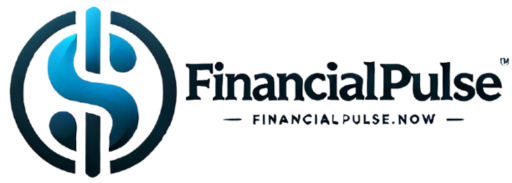Summary
The gig economy, characterized by short-term contracts or freelance work as opposed to traditional long-term employment, has experienced significant growth in the United States. Facilitated by technological advancements and changes in workforce preferences, the gig economy has provided flexibility for workers and has been a substantial contributor to the U.S. economy. However, the sector faces challenges including market saturation and issues surrounding fair compensation and worker protection. The development of platform-based economies, supported by social media and digital platforms, has played a major role in this expansion, though concerns over user data protection persist.
The emergence of side hustles, or secondary jobs often undertaken in addition to full-time employment, has been a notable trend within the U.S. gig economy. Areas such as artificial intelligence and YouTube monetization have experienced particularly significant growth. The most rapidly expanding side hustle nationwide is operating a mobile car wash service, showing a 276% search growth between 2023 and 2024.
The gig economy and side hustles have significant implications for workers and businesses. On one hand, they offer opportunities for income diversification and skill development for workers, and access to a flexible pool of talent for businesses. On the other hand, gig work brings with it unique challenges, such as job insecurity and lack of traditional employee benefits.
The future of side hustles and the gig economy appears promising, despite the potential challenges. The increasing prevalence of side hustles and the evolving nature of work, influenced by automation and technology, suggest that these trends will continue to shape the U.S. labor market. Therefore, understanding the dynamics of the gig economy is vital for both workers and businesses.
The Gig Economy in the United States
The gig economy, defined as a labor market characterized by short-term contracts or freelance work as opposed to traditional long-term employment, is a growing trend in the United States. The rise of the gig economy has been facilitated by many factors, including technological advancements, business demand, and workers’ desire for flexibility. The Freelance Forward 2022 report by Upwork revealed that freelancers contributed $1.35 trillion to the US economy in annual earnings in 2022.
The gig economy’s growth, however, has not been without challenges. One such challenge is potential market saturation as more people engage in gig work, leading to increased competition. In addition, while the gig economy offers more job opportunities, there is a need to ensure a fair deal for workers amidst the pursuit of innovation. According to a report in 2024, the gig economy had a market size of $556.7 billion.
The gig economy has also led to the rise of platform-based economic and social activity, often referred to as the platform economy. Platforms such as social media have been instrumental in supporting the gig economy. Influencer marketing, which involves companies hiring individuals with large social media followings to promote their products, is one example of a gig in the platform economy. Nevertheless, concerns have been raised about the protection of user data on these platforms.
Market competitiveness also influences gig work trends. For instance, 63% of respondents with physical location-based gigs reported facing high competition. Remote gig workers may be able to bypass some of this competition, even if they reside in populous cities.
The transformative impact of the gig economy is expected to continue, with implications for the labor market, social behavior, and economic trends. It is also anticipated that the gig economy’s growth and evolution will continue to be a topic of interest and study.
Fastest Growing Side Hustles in the U.S.
The growth of side hustles in the United States has seen a significant increase in recent years, particularly in the areas of artificial intelligence (AI) and YouTube monetization . A study by SideHustles.com utilized Google search data to determine the growth rates and trends of various side hustles across the country .
Overview of Growth
From 2023 through 2024, American interest in AI-powered side hustles grew by 28% . YouTube monetization was another area of substantial growth, becoming the fastest-growing side hustle in six states including New York, Illinois, and Michigan . The study further analyzed the top trending side hustles in each state and city, using a difference-from-the-mean calculation . This data analysis examined both the global and regional impacts of these growing markets .
Top Growing Side Hustles
According to the study, the number one growing side hustle in the U.S. is operating a mobile car wash service . The interest in this gig saw an astounding 276% search growth between 2023 and 2024, with Phoenix, Arizona recording the highest spike . Businesses in this side hustle typically offer tiered services, such as basic exterior wash, interior cleaning, and premium detailing services .
Impact on Economy
The income among gig economy workers can vary greatly, with 55 percent reporting they make under 50,000 USD annually . However, the share of high-earning independent workers, those making 100,000 USD and above, has also increased since 2011 .
Despite these varying income levels, side hustles are not solely about monetary gain. They can also offer opportunities for professional growth, as non-linear career paths are becoming more common in an increasingly automated and tech-based work environment .
Impact on Workers and Businesses
Furthermore, the platform economy, where businesses act as intermediaries and workers are independent contractors or freelancers, is reshaping economic activities and work relationships . This shift to digital and independent contracting is due to the user-friendly interfaces and variety of services offered by several gig economy platforms .
The growth of side hustles and the gig economy has a far-reaching impact beyond the U.S., contributing significantly to the global economy as well .
Role of Social Media in the Growth of the Gig Economy
With the popularity of gig work rising (with nearly 9% of American adults participating in 2021), the ascendancy of social media seems to have played a significant role. Platforms like Etsy and Shopify allow consumers to connect with gig workers such as artisans and crafters, offering a unique service that mainstream stores can’t match. For instance, visual artists and writers can leverage platforms like Pinterest, Instagram, Facebook, Twitter, and LinkedIn to showcase their work and reach potential employers.
However, using these platforms for marketing or selling products online requires careful handling of user data, considering these platforms often collect extensive user information. It is imperative for gig workers to ensure the protection of their clients’ data and to clarify how their information may be collected and used.
Despite the negative impact of the COVID-19 pandemic on demand in the gig economy, the market is expected to return to pre-pandemic growth trends. The global pandemic, in fact, has accelerated the adoption of remote work and gig platforms, underscoring the value of flexible work arrangements. The projected size of the gig economy in terms of gross volume for 2021 stands at $347.1 billion.
Insights from a Gig Worker’s Perspective
A key example of a thriving gig economy business is mobile car washing and detailing services, which offer flexibility, low startup costs, and potential for growth. Companies like Mobile Wash in California leverage an app-based platform, enabling their workers to offer car washing and detailing services at customer’s convenience. They operate using their own vehicles and supplies, providing a flexible working model.
One aspect of the gig economy that workers often value is the independence from reporting to a typical boss or manager on a daily basis. However, they are still required to adhere to rules established by the platforms they work through. This brings a unique set of challenges, as the freedom experienced by gig workers can sometimes impede growth.
Despite the challenges, there is a sense of optimism among freelancers. By taking proactive steps to maximize the benefits and overcome challenges, gig workers can significantly benefit from this economy. Strategies may include diversifying services offered and targeting specific customer groups to create effective marketing strategies. Also, using apps for business can significantly enhance operational efficiency and customer experience.
However, it’s important to note that gig work does not always guarantee job security. Many gig workers lack benefits like health insurance and paid time off, as many employers choose to save money by not providing these benefits. Despite these challenges, with persistence and dedication, a gig worker can thrive and turn their side hustle into a prosperous business.
Top Side Hustles in Different Cities Across the U.S.
Today, approximately 72% of Americans rely on side hustles to cover essential expenses, go on vacations, shop, and save and invest money. More than half of these individuals juggle multiple side hustles to create several income streams. However, the prevalence and popularity of certain side hustles vary across U.S. cities. Some cities have a higher concentration of side hustlers than others, which is not always aligned with population size.
The fastest-growing gig in the U.S., determined by analyzing location data of Side Hustle Nation visitors, is not necessarily concentrated in the most populated areas. Instead, the data showed that some cities had a side hustle frequency 2-5 times higher than the national average when population size was taken into account.
For individuals looking to embark on a side hustle, it is important to research their local market. If their city has a high demand for a specific side hustle, they can position themselves to stand out among local competitors. If the demand is not as high, they can either relocate or target their side hustle towards areas where it is in higher demand, especially for gigs that can be performed remotely.
Different side hustles can have varying implications for workers. Some jobs, like customer service representative positions, can be done from home and are great for retirees. Others, like a 1099 commission-based role, offer opportunities to earn as much as you put in and can be done from anywhere with an internet connection.
Half of millennials and 46% of Gen Zers have a side hustle, with most Americans depending on this income. The loss of a side hustle could lead to significant financial difficulties for younger Americans, with about one in four of those under 40 being unable to pay their bills if their side hustle disappeared.
The side hustle industry is growing and evolving, creating new opportunities and challenges for workers and businesses alike. Future growth and trends will continue to be shaped by local market conditions, competition, economic factors, and policy changes.
Future of Side Hustles
The advent of the gig economy has led to an increasing prevalence of side hustles among American workers. Many individuals engage in these additional jobs to supplement their income in a fluctuating economy, while others use them as avenues to pursue their passions. With the increasing integration of automation and technological advancements in the workplace, side hustles also offer valuable avenues for professional growth.
According to Mark Slack, a career expert at SideHustles.com, side hustles are no longer a trend but are now considered a primary method for building financial security and freedom. His observation is underscored by a study that shows that side hustles have been gaining momentum since 2025.
In the midst of economic downturns, these jobs have been viewed as new opportunities for extra income. For example, starting a side hustle as a car wash service has been identified as a potentially lucrative venture with low startup costs and opportunities for growth.
As of 2021, approximately 31% of U.S. employees had a side hustle or gig outside of their primary jobs. The growth and acceptance of the gig economy have even made it possible for many gig workers to work remotely, a factor that has been associated with a 47% increase in productivity.
The global gig economy, valued at USD 556.7 billion in 2024, is predicted to grow to USD 2146.87 billion by 2033, representing a compound annual growth rate (CAGR) of about 16.18% during the forecast period. Interestingly, the Asia Pacific region is projected to experience the second-fastest growth rate, driven by rapid urbanization and attractive marketing strategies employed by international players.
However, the future of side hustles is not without challenges. Some side hustles, such as car washing, are dependent on weather conditions and involve physical labor. However, with proper planning and dedication, these challenges can be overcome.
As we move forward, the impact of the gig economy on the future of work and business cannot be underestimated. Therefore, understanding the trends, advantages, and challenges shaping this new era is crucial for those considering embarking on side hustles.
The content is provided by Harper Eastwood, Financial Pulse Now























